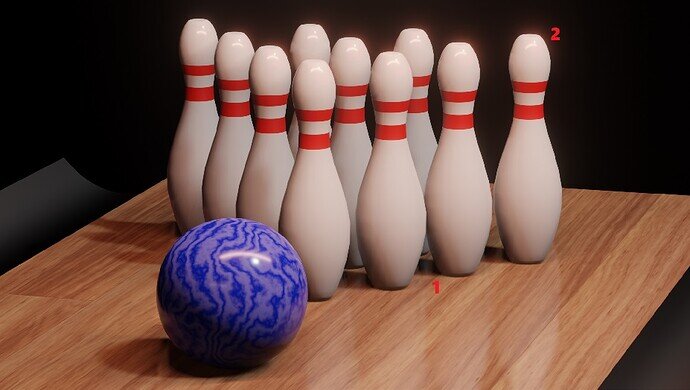For the hovering problem you will need to go to the key frame where it begins hovering in place and adjust its position then replace the key frame with the new position. However this may be difficult to do because I’m assuming it’s a rigid body simulation, therefore you would need to reenact the scenario again. To be honest though I didn’t really notice the hovering at all. I also have limited experience with rigid bodies. I have only used it to simulate cloth and use one of the positions of the animation for a static object.
For the lighting, there are a few tips I have. The lamps that you have in the scene have an option for contact shadows (1). This makes sharp shadows to the surfaces near the floor or an other surfaces nearly touching. Select the lamp and light-bulb tab will appear. Click it, then scroll down to shadows and there will be check box for contact shadows.
Replicating real-life proportions also assists in easier lighting. The bigger an object is, the more powerful a light needs to be. Blender has real world units of measure to go by.
Also textures will further boost the appearance of the realism. Scratches, dirt, cracks, and dents help (the more imperfect the condition of an object’s surface is, the more realistic it appears).
Next, when a render is complete, you can go to the compositor tab and add a more noticeable glare to the reflections (2). The compositor is the “fix it in post” effect, letting you make adjustments to the final image (similarly to photoshop, but with nodes). However, it’s more powerful because during an animation it will add these effects to every frame (since every frame is an image). These are some quick ideas to keep in mind. Overall all, I like this animation. I don’t think the lighting needs to changed at all. The only thing it may need are contact shadows. I hope this helps. If you have any questions or would like for me to go further in depth with any of the details mentioned above, let me know. 
 I’m pretty sure the ball is still hovering slightly when it gets close to the balls…but no amount of tweaking seems to have sorted it!
I’m pretty sure the ball is still hovering slightly when it gets close to the balls…but no amount of tweaking seems to have sorted it!


